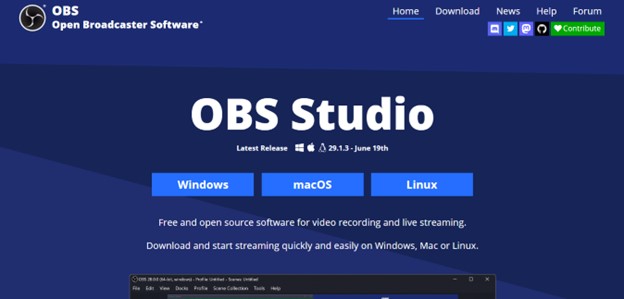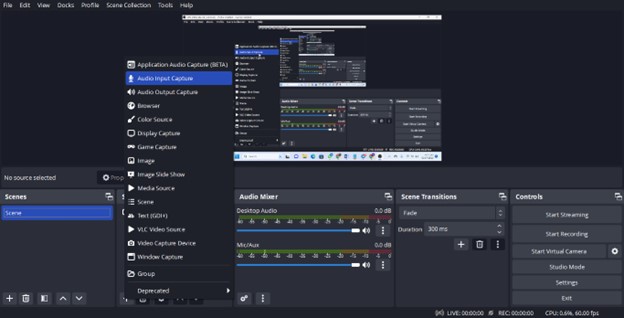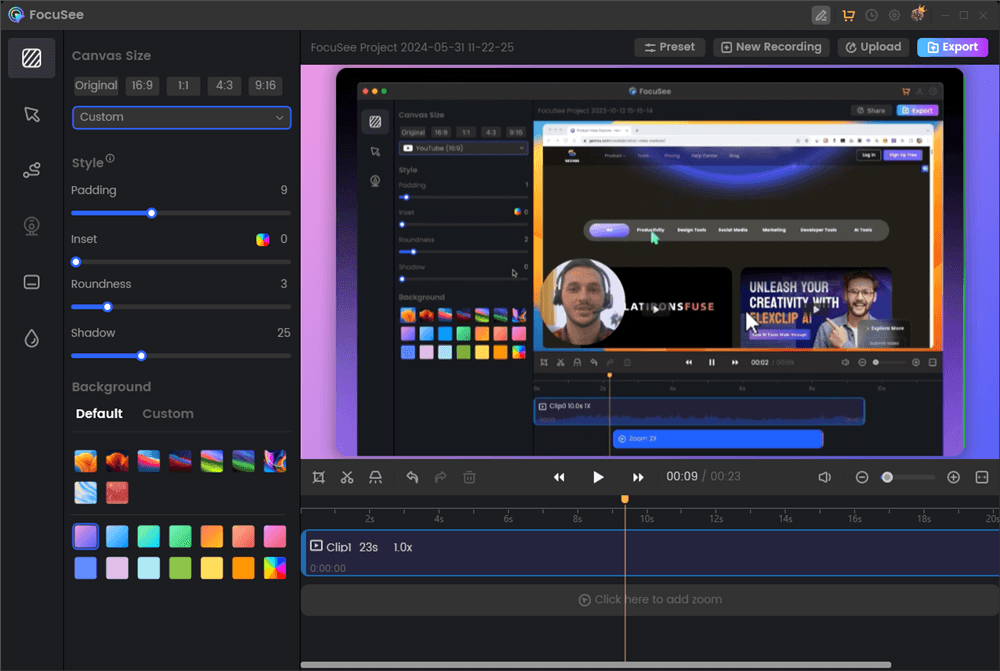If you’re aiming to showcase your gaming prowess or share your commentary but are facing an “encoding overloaded” error in OBS Studio, you’re not the only one—it’s a common challenge for streamers. Fortunately, with some adjustments and optimizations, you can quickly get back to a smooth streaming experience.
This guide will explain the reasons behind the OBS encoding overload and offer you practical solutions to restore the stability of your stream, eliminate lag, and keep your audience hooked.
What Causes OBS Encoding Overload?
Streaming appears to be as easy as pressing “Start Streaming,” but in reality, your computer is tirelessly encoding your game, webcam, and audio in real time. This encoding task is resource-intensive, particularly for your CPU.

OBS Studio Interface
Here are the main factors that can trigger an OBS encoding overload:
- Intensive Encoding Process: Video encoding is a CPU-heavy operation. If your CPU struggles to encode a high-quality stream while also running your game or other apps, overload issues arise.
- High Bitrate: Bitrate is the rate at which data is sent to viewers. A higher bitrate can improve stream quality but also ramps up the encoding workload.
- High Resolution and Frame Rate: Streaming at 1080p and 60 fps delivers a crisp image but demands more processing power compared to 720p at 30 fps.
- Resource-Intensive Games/Software: Graphics-heavy games, especially with high settings, can max out your CPU. Running other CPU-draining programs in the background while streaming exacerbates the problem.
- Aging Hardware: Older CPUs with fewer cores, less than 8GB of RAM, or outdated graphics cards (if you’re using GPU encoding) can all lead to encoding overload.
How to Fix OBS Encoding Overloaded
If you’re dealing with an “encoding overloaded” issue in OBS, here are some practical steps to troubleshoot and fix the problem:
Before making any changes, it’s a good idea to test your stream to see how your system performs with the current settings. This will help you gauge the impact of any adjustments you make.
Adjust the Bitrate
Use an online bitrate calculator to find the optimal bitrate based on your internet upload speed and desired stream quality.
If overload persists, gradually decrease the bitrate in OBS until you find a setting that works without overloading your system.
Lower the Resolution or Frame Rate
If bitrate adjustments aren’t enough, consider reducing your stream’s resolution or frame rate. While this may affect the quality, a smooth stream is often more important than a high-res, laggy one.
Select the Appropriate Encoder
- x264 (Software Encoding): If you have a robust CPU, this encoder is a good choice. You can also adjust the preset to a faster setting to reduce CPU load.
- NVENC (NVIDIA GPU Encoding): If you have an NVIDIA graphics card, use NVENC to offload the encoding task from your CPU. Experiment with its preset options to find the right balance.
Fine-Tune Output Settings
If your streaming resolution is lower than your recording resolution, enable “Downscale Output” in OBS to ease the load on your encoder.

Setup OBS
Close Unnecessary Applications
Free up system resources by closing background applications that aren’t needed for streaming or gaming.
Consider a Hardware Upgrade
If you’ve tried all the above and still face issues, it might be time to look at upgrading your hardware:
- CPU: A strong multi-core CPU is key for smooth streaming. Aim for at least 6 cores with a high clock speed.
- RAM: Ensure you have sufficient RAM; 8GB is the minimum for streaming, but 16GB or more can greatly improve performance.
- Graphics Card: If you’re using NVENC, a dedicated NVIDIA card with ample VRAM (4GB or more) will enhance your streaming capabilities.
OBS Studio Alternative – FocuSee
FocuSee, as the highly recommended OBS Studio alternative, is a professional screen recording software that aims to improve your focus and productivity. It is designed to help you stay focused on your screen recording tasks and minimize distractions. It is perfectly tailored to meet your needs for recording tutorial videos, product demos, promo videos, and more.

Screen Recording Editing Interface
Key Features:
- Creating a demo, promo, tutorial, marketing, and zoom-in video becomes effortless with its ability to record your screen, audio, and webcam simultaneously or separately.
- When you click on specific parts in the video, it can automatically apply a smooth zoom-in effect to bring them into focus.
- You can select the selfie and screen layout that best suits your purpose: side-by-side, overlay, or screen-only.
- FocuSee can apply motion blur effects to mouse movements, screen zooms, and screen transitions to enhance the visual experience.
Pros
- Works well both on Windows and macOS
- Auto zoom in and out features to help your recordings focus on the key points easily
Cons
- No web version is available
Conclusion
Encountering the dreaded “encoding overloaded” message in OBS doesn’t have to be a stream-ending disaster. By understanding the factors that cause it and implementing the solutions outlined in this guide, you can optimize your streaming setup for a smoother, lag-free experience.
Remember to test your settings after each adjustment, and don’t be afraid to experiment to find the perfect balance for your hardware and internet connection. With a bit of patience and fine-tuning, you’ll be back to sharing your content with the world in no time!
FAQs on OBS Encoding Overloaded
Q: What is a good bitrate for OBS?
A: There’s no single “best” bitrate. It depends on your internet upload speed and the resolution/frame rate you’re streaming at. Use an online bitrate calculator and aim for a bitrate that’s about 80% of your maximum upload speed.
Q: Should I use x264 or NVENC?
A: If you have a powerful multi-core CPU, x264 (software encoding) can provide excellent quality. If you have a dedicated NVIDIA graphics card, NVENC (GPU encoding) is generally more efficient and puts less load on your CPU.
Q: How do I check my CPU usage while streaming?
- Windows: Press Ctrl + Shift + Esc to open Task Manager. Click on the “Performance” tab.
- macOS: Open “Applications” > “Utilities” > “Activity Monitor.”
- Look for the CPU usage percentage.
The post How to Fix OBS Encoding Overloaded Issue? appeared first on Gemoo.